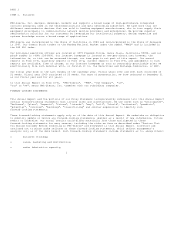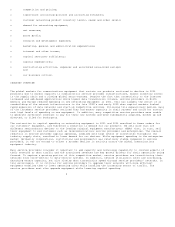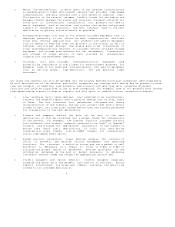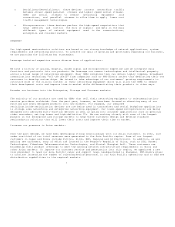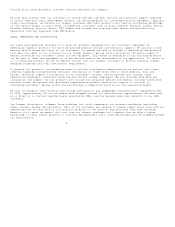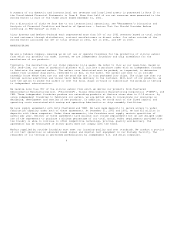Adaptec 2002 Annual Report Download - page 6
Download and view the complete annual report
Please find page 6 of the 2002 Adaptec annual report below. You can navigate through the pages in the report by either clicking on the pages listed below, or by using the keyword search tool below to find specific information within the annual report. o Metro: the metropolitan, or metro area, of the internet infrastructure
is predominantly a fiber optic−based network that provides high−speed
communications and data transfer over a city center or regional area.
This portion of the network manages traffic inside its own region and
manages traffic between the access and long−haul transport networks for
inter−city or international transmission. Our products are used in
metro equipment such as switches and routers that gather and process
signals in different protocols, and then transmit them to the next
destination as quickly and efficiently as possible.
o Enterprise/Storage: this area of the network includes equipment that is
deployed primarily in the office for data communications and other
local area network applications. Our products are used in equipment
such as medium to high−end laser jet printers in the office, as well as
switches and storage devices that enable data to be transferred to
local telecommunications networks. It includes network attached storage
equipment and storage area networks for the management, transmission
and storage of large amounts of data utilized by enterprises,
corporations and government agencies.
o Consumer: this area includes telecommunications equipment used
primarily by individuals in their homes for entertainment purposes. For
example, some of our lower−end microprocessors are used in equipment
such as set−top boxes, high−definition TVs and personal video
recorders.
Our chips and chipsets can also be divided into the broadly defined functional categories identified below.
As with descriptions of the network, particular categories may overlap and a device may be present in more
than one category. In addition, some products, particularly multiple chip sets, integrate different
functions and could be classified in one or more categories. For example, some of our products both convert
high−speed analog signals to digital signals, and also split or combine various transmission signals.
o Line interface units: these devices, also referred to as transceivers,
transmit and receive signals over a physical medium such as wire, cable
or fiber. The line interface unit determines the speed and timing
characteristics of the signals, and may also convert them from a serial
stream of data into a parallel stream before they are further processed
for transmission to the next destination.
o Framers and mappers: before the data can be sent to the next
destination, it must be converted into a proper format for transmission
in the network. For example, the framing function arranges the bits
into different size formats, commonly referred to as "cell" or "packet"
formats, and attaches the appropriate information to the formats to
ensure they reach their destinations. In turn, this data may be
inserted into other frames, such as SONET frames, for transmission
across high−speed fiber optics.
o Packet and cell processors: these devices examine the contents of
cells, or packets, and perform various management and reporting
functions. For instance, a switch or router may use a packet or cell
processor to determine if a signal is voice or video in order to
allocate the proper amount of bandwidth. Service providers can use
information gathered by the cell or packet processor to determine
customers' network usage and charge the appropriate service fee.
o Traffic managers and switch fabrics: traffic managers organize,
schedule and queue cells and packets into and out of switches. Switch
fabrics interconnect the wires and fibers, allowing the data to be
routed to its intended destination.
6


